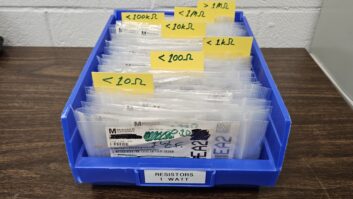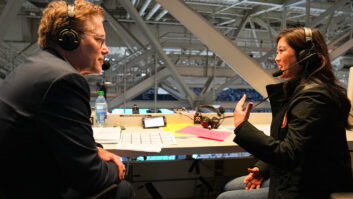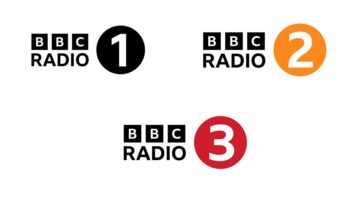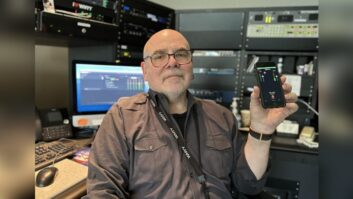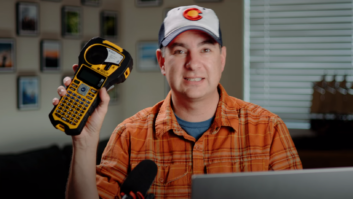The author is director of archives for New York Public Radio (WNYC/WQXR).
FROM THE EDITOR
We continue our recent special series about preserving the history of radio, in conjunction with the Library of Congress’ Radio Preservation Task Force (http://radiopreservation.org).
— Paul McLane
There’s a chronic perception about the “dusty old archives.”
I’m not sure if this helps or hurts our preservation efforts. It’s true that we do occasionally find, or “unearth,” valuable things in less-than-wholesome places like damp basements, forgotten crawl spaces and blistering hot attic corners. But I would venture that 96 percent of the time we are neither digging up nor dusting off aural relics, like some prospecting Indiana Jones of the library desk set.
Believe it or not, a great many of our choicest bits of the past are cataloged (to one degree or another) and neatly arranged by format in a well-lit, temperature-humidity-controlled room with compact moveable shelving, for that handful of us who are fortunate enough. There is no dirt, no shovels nor pick axes.
There is a little dust, but there is a little dust just about everywhere. And there may be a faint scent of vinegar from degrading acetate tape or the scent of stale off-gassing from vintage lacquer discs.

People love the exotic image of the crusading archivist in the jungle of his/her collection wearing a tan fedora with white cotton gloves, carrying a pack of acid-free record sleeves in pursuit of sonic treasures to be rescued from oblivion.
Credit: istockphoto/CTRPhotos
MASSIVE TROVE
I’m frequently asked how long it will take to digitize it all and make it available to producers and the public.
My answer usually includes a flip reference to job security and gray hair. Unless some major sugar daddies step up to the plate, there will probably never be enough money to save all the broadcast recordings that need to be saved.
Even though broadcasters, both public and private, have a historically bad reputation for not saving their productions, there remains a massive amount of material to be worked on. The analog running time is staggering. It’s true that some digital media can be reformatted in less than real time. This is helpful but still leaves us with numbers that may result in sleeplessness for some. We soldier on and do what we can.
Many factors, some of them conflicting, must be weighed when faced with a large collection of broadcast materials on just about every audio format imaginable.
They include some time-worn knowledge about the shelf life of various brands of acetate and polyester tape and lacquer transcription discs. Then there are the more recent and sometimes less clear assessments and predictions concerning the longevity of various digital formats and knowledge, or lack thereof, of their storage history.
Add to this mix the obsolescence of playback equipment.
Recent news of the last VHS machine rolling off the assembly line is only the most recent announcement in a long line of formats dependent on a shrinking pool of technicians and engineers who can keep them properly aligned and calibrated. Although we may be collectors at heart, we have no choice now but to hoard splicing tape and purchase odd-sized styli from overseas. Add to that the trolling of eBay and scanning of the trades for ads of studios going out of business, to maintain the keys to our collections. How else will we deal with the concerts on a variety of digital tape formats, the Beta tapes encoded with dbx 700 and the field recordings on MiniDisc? Even the ubiquitous compact cassette has become a thing of mystery to many millennials.

Andy Lanset, in a composite photo in “front” of WNYC’s original transmitter.
Credit: Headshot Christine Butler, composite Victor Stabin
IRENE
Still, sometimes there is technical progress, even for obsolete formats.
For example, we are grateful for a new technology called IRENE that allows for laser scanning of discs and cylinders when using a stylus is not possible or is too risky for retrieving sonic information. (According to a story in The Atlantic, the acronym stands for Image, Reconstruct, Erase Noise, Etcetera, but the name originally was chosen because the first recording used was “Goodnight, Irene” by the Weavers.) This preservation option gives hope to archivists with one-of-a-kind broken glass transcription discs but is still limited to a few locations and is neither without cost nor sonically equal to a stylus.
Assessments for digitization, however, are not based on format viability alone. Added to this decision-making process is a review of the content and the demand for that content. And last, but not least, the funding available for reformatting and catalog work.
Older field recordings that can be of immediate use to the news department and content producers may not seem terribly sexy to funders who place a higher value on a series of interviews publicly available on the web aimed at students and scholars. To date, we’ve pushed close to 2,000 hours of material to wnyc.org. View and listen at www.wnyc.org/series/archives-preservation.

The crusading archivist.
People love that exotic image, a gritty romantic cliché of discovery, really: the crusading archivist in the jungle of his/her collection wearing a tan fedora with white cotton gloves, carrying a pack of acid-free record sleeves in pursuit of sonic treasures to be rescued from oblivion.
The reality, however, leans more to the ongoing ordinary and methodical efforts of archivists and preservationists, behind the scenes, in civilized spaces with adequate staff and funding. We soldier on.
Share your experiences with preserving radio content. Email[email protected]with “Letter to the Editor” in the subject field.
Watch for information coming soon regarding the next Radio Preservation Task Force conference about saving America’s radio heritage, planned for late 2017.







